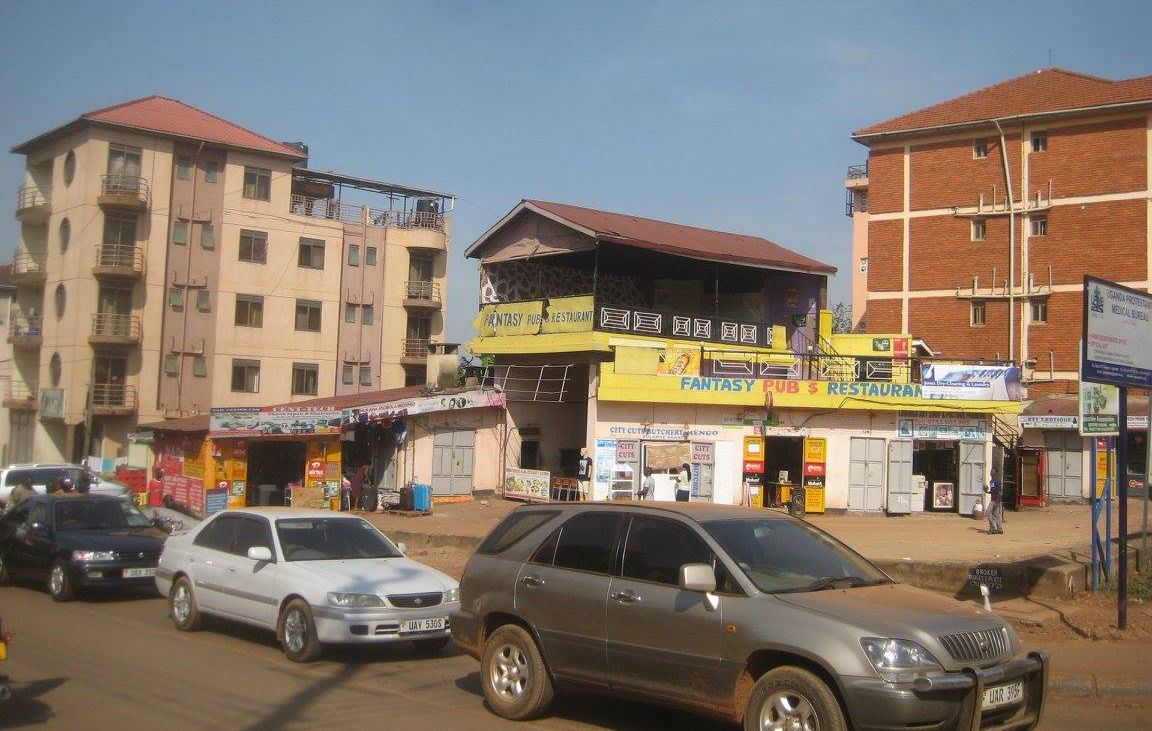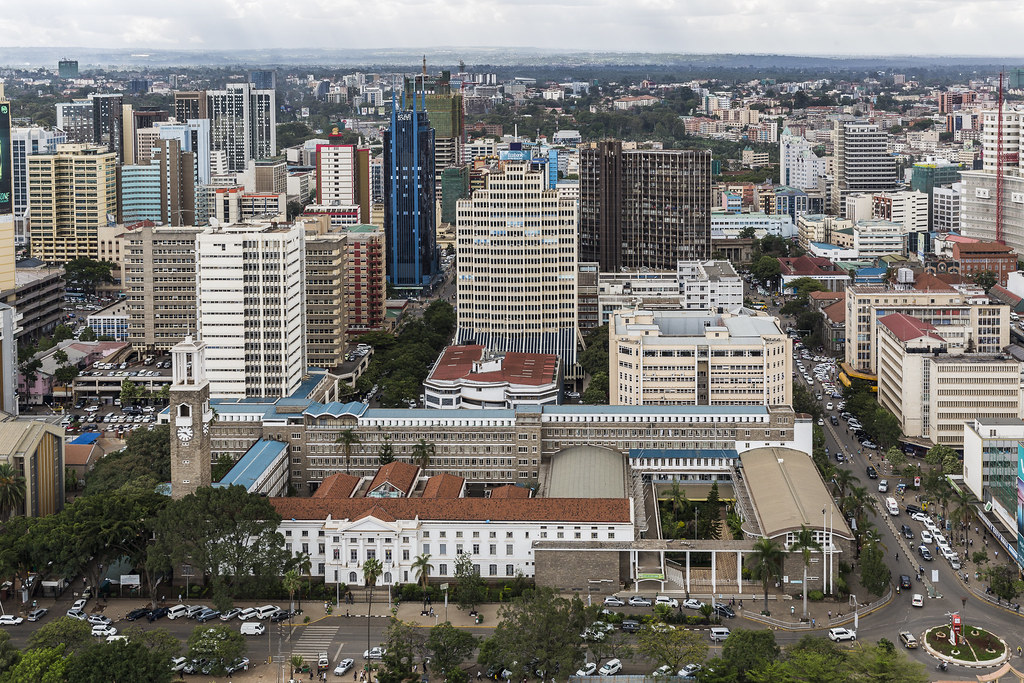
April 21, 2023
Living Beyond A Life Well-Lived
Rural Africa is home to millions of used Japanese vehicles, sustaining local transport until their last breath. But for how long?
By Xiaochen Su
The crowd jostles as soon as the minibus screeches to a stop. Men and women of all ages, some carrying produce or backpacks, surge toward the small door, shoving others aside as they struggle to be the first to climb aboard. Those already on the bus peer expressionless through the open windows, the dust of the rural road permeating the humid air. Just another morning commute into Iringa, in the central highlands of Tanzania.
Japanese cars find a second life in Africa
At the center of this typical scene at the bustling market town is an import, itself transported for months across thousands of miles, before spending its remaining days as the backbone of the local public transport system. Chipped paint from years of service cannot conceal the print on the side of the minibus “Tokyo XX Kindergarten” in kanji and hiragana. Of course, its Tanzanian passengers will not know what that says but the yellow coloring and pictures of children emblazoned on the outside, not to mention the tiny seats (suitable for a five-year-old) should be clear giveaways to the original purpose of the vehicle.
This particular minibus is by no means unique in finding itself so far away from its original home. According to research published by Prof. Arata Abe at Yamaguchi University, Japan exported a total of 9.45 million used motor vehicles between 2010 and 2019, 2.6 million of which were destined for Africa. This makes up nearly a quarter of the 11.11 million used vehicles Africa imported in those years. The number of used Japanese vehicles imported by Africa grew steadily from less than 25,000 in 2001 to a peak of nearly 350,000 in 2018, before declining slightly in recent years due to COVID-19.

On the streets of Tanzania, plenty of anecdotal evidence confirms Prof. Abe’s estimate that the country imported 380,000 used vehicles from Japan in a decade. From Corolla serving as private taxis to Hilux and Hino respectively dominating the offroad and trucking markets, the visible presence of Japanese vehicles abounds. Toyota boasts nearly 20 authorized dealers in Tanzania to service existing vehicles, even though the country only sells around 2,000 new vehicles every year.
An industrializing Africa kicking the import habit?
But the preference for secondhand over new vehicles is becoming a source of irritation for authorities. Even as imported used vehicles continue to dominate African roads, governments are increasingly putting restrictions in place that can help boost domestic industrialization. In January 2022, Kenya led the continent in implementing a blanket ban on the import of vehicles older than eight years. Tanzania has also set the maximum age limit of imported vehicles to ten years, in line with recommendations by the East African Community (EAC) to develop the regional vehicle assembly industry. The United Nations also blames old cars for increasing air pollution on the continent, further pushing governments to keep secondhand vehicles out through stricter emissions tests.

The restrictions on used motor vehicles are part of a wider effort by African governments to reduce the dependence of their citizenry on secondhand manufactured products. In particular, as early as 2011, the EAC proposed a concerted regional industrialization policy that involved banning the imports of foreign secondhand clothing, shoes, and bags to develop the local apparel industry. Rwanda’s implementation of the ban in 2017 sparked a trade dispute with the US. The move imperiled the livelihood of local dealers even as some supported the move as preserving African dignity.
Yet, it remains an open question whether the ban on foreign industrial imports can lead to a blossoming of local manufacturing. Research from Kwame Nkrumah University of Science and Technology in Ghana found no indication that bans on used vehicles led to an increase in the sales of new vehicles, with some countries experiencing an increase in used vehicles even after the ban. Bans on secondhand clothing, similarly, have led to growth in imports of newly-made clothes from China that outcompete local African producers.
The long tail of import substitution
Thus, the Japanese used car in rural Tanzania is not yet ready to fade away. Even as local governments continue to call for restrictions on new imports of old vehicles, those that are already on the ground will be used until they can no longer run. New, or at least, less old vehicles will be more expensive for price-sensitive transport providers and consumers. The yellow minibus, in its first life, has already proven itself to be resilient and of high quality. Keeping it running will be much cheaper and more reliable than replacing it with something unknown. It is no wonder that the average used vehicle in east Africa is more than 15 years old.

The ubiquitous presence of these battered secondhand vehicles on African roads makes clear the difficulty of Africa to develop an industrial sector at least sufficient in size and sophistication to provide for its domestic transport needs. Even at its pre-COVID peak, the whole of Africa was only able to produce fewer than 800,000 motor vehicles a year, a fraction of the market demand and the number of cars it imports from outside the continent. It does not help that public infrastructure necessary for industrial production, from roads to electricity, faces between USD 68 billion to USD 108 billion in funding shortages every year. Investors and donors have not yet provided enough financial means for Africa to grow its industrial sector.
That same reluctance to fund African industrial development is also true for Japan. The Japanese government promised USD 30 billion to Africa in public-private partnerships last year during the eighth Tokyo International Conference on African Development (TICAD). However, looking under the hood, the TICAD funding consists largely of vague promises to develop African startups, eradicate diseases, reduce hunger, improve governance, and provide trained human resources. None in particular address Africa’s current lack of industrial capacity and the infrastructure needed to ensure its development.
The questionable future of the Japanese auto industry
Given the outsized presence of Japanese secondhand vehicles in Africa, Japan can provide more support in prolonging the second life of these used vehicles. After all, those who gave life to the vehicles should be most familiar with them. Perhaps some of the funding from TICAD or other Japanese private and public initiatives can be used to help Africans make the best use of their existing Japanese vehicles. Building better roads, training more engineers, and assisting with urban planning will all ensure that the vehicles can still live healthy lives long after a well-lived one in Japan.

However, how much the Japanese auto industry can help Africa remains a question, as its future in the global marketplace becomes increasingly uncertain. Whereas the U.S., Europe and China are racing toward greater production and adoption of electric vehicles (EV), Japan risks isolation through its lonely bet on hydrogen vehicles. The failure of Japanese carmakers to keep up with the global EV race may soon diminish their clout in the global market, and reduce their ability to finance new ventures anywhere in Africa. Secondhand vehicles in Africa may have to do with even less support from their Japanese producers.
Indeed, as EVs become a global transport staple, the African vehicle market will also have to change dramatically, in ways that are unfavorable to those old workhorses of rural Tanzania. The greater prevalence of EVs in the future means that gas-guzzling secondhand minibuses, trucks and cars that sustain African transport will be phased out elsewhere. With no more spare parts being manufactured, African mechanics will have to make do with ad hoc substitutes, or worse, put the vehicles into early retirement. The rise of EVs, then, may hasten the end of many used Japanese vehicles in Africa.







